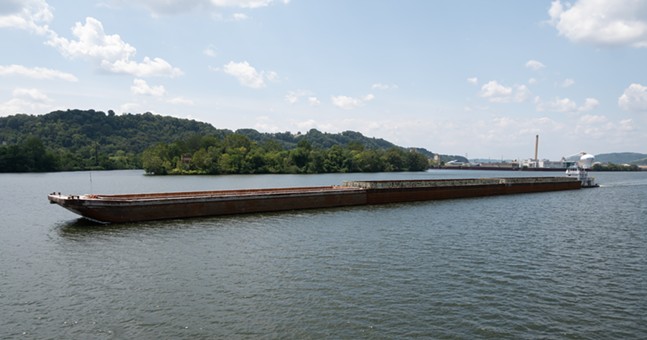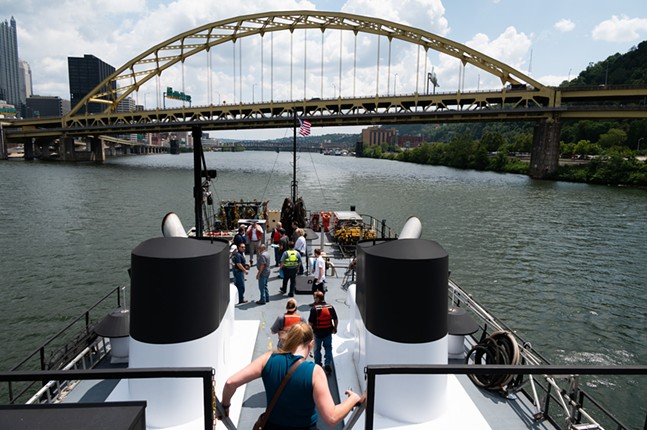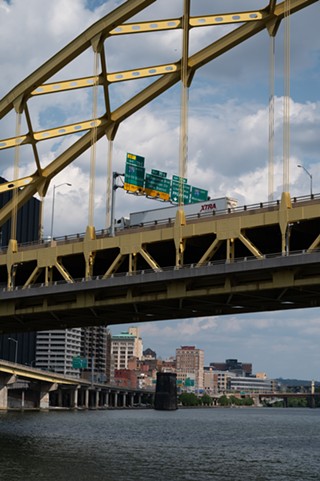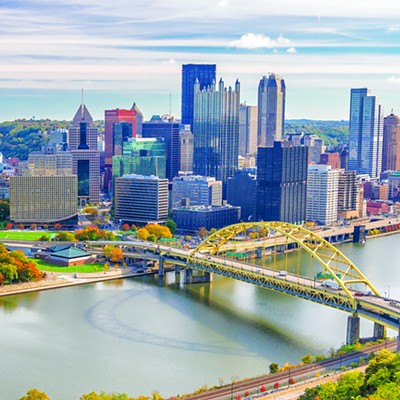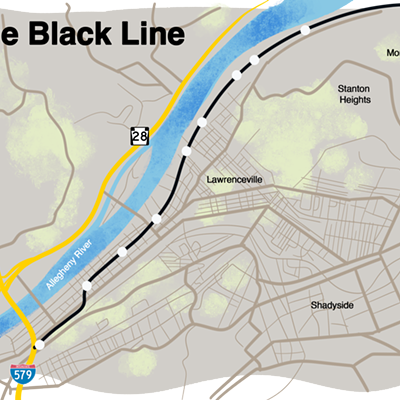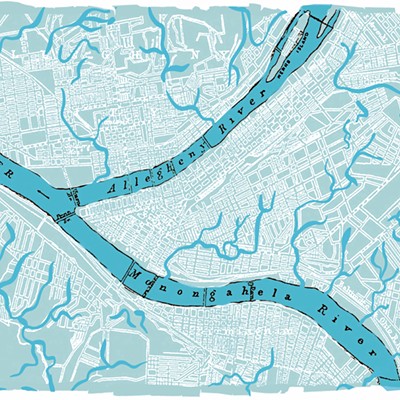Late last spring, during my first afternoon at Pittsburgh City Paper, a soft gong rang out from the corner of the office. “Nine-banger,” declared a co-worker, as several others amassed around the windows to inspect a passing barge convoy. Expressions of wonder (exaggerated, but not wholly feigned) carried a sort of stilted dialogue for several moments until everyone shuffled back to their seats to resume their work. The enthusiasm was infectious. I felt right at home.
Documenting barges is, I learned, a CP staff ritual maintained since the company’s relocation in early 2020 to our river-facing office along Fort Pitt Boulevard. Over the years, a jargon has evolved to elucidate our findings: [insert number]-banger refers to the total vessels attached to each towboat; “long boi” means any sizable configuration (usually nine-banger or upward); other unique terms are sometimes conjured as the need arises.
But despite our close attention, we continued to stumble over the same questions: Where are they coming from? Where are they going? Why do some have names like Darrell L or Cori Weil or Ernest Martin? Why do some brandish pirate flags? And what is all that weird shit on that flat rusty one with the porta-potty?
Journalists at alt-weeklies get paid to find answers to these sorts of questions, but more importantly, I sensed that the barges concealed more than just coal within those lumbering steel hulls. I knew I had to write the Barge Story.
I began probing Pittsburgh’s river transportation complex last month and found myself cruising in a rugged towboat and dining in the illustrious Duquesne Club before I could put pen to paper. Barging, it turns out, is a close, insular world, yet one where commodity prices in China can signal doom or stability for deckhands in Washington County. It’s a world of locks and dams, skilled workers and entitled executives, Dunkin’ Donuts and filet mignon. And underpinning it all are scores of earnest, hard-working people whose contributions to our region go largely unnoticed.
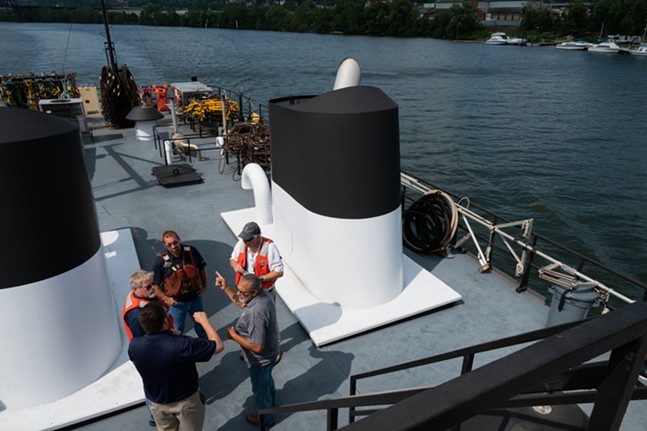
My first call is to Mary Ann Bucci, executive director of the Port of Pittsburgh Commission, a state authority charged with overseeing the infrastructure needs of Pittsburgh’s major waterways. The district covers around 200 miles of navigable rivers stretching outward from Pittsburgh to Clarion County, Greene County, and Beaver County.
Beyond the district, Bucci tells me, Pittsburgh is connected to much of the country and, ultimately, the world’s oceans through the Mississippi, which collides with the Ohio at the southern tip of Illinois.
“You have over 11,000 miles of navigable river,” Bucci says. “There's a lot of attributes to the Mississippi River and we can deliver freight to any of those regions.”
River transportation is the cleanest, safest, and most economical way to transport bulk items, its proponents say, but getting these along Pittsburgh’s rivers is only possible due to a costly and aging infrastructure system.
Back in 1803, when Merriweather Lewis set out from Pittsburgh to meet William Clark downstream in St. Louis, his crew made it just three miles along the Ohio before shallow conditions forced them ashore. “Much fatigued” from fighting the hostile water, they spent the night on the banks of McKees Rocks, according to Lewis’ journal account.
Today, more than 16 million tons of freight move through the Port of Pittsburgh each year, making it one of the country’s largest inland ports by volume. Some shipments are short-haul, picking up coal in Greene County, say, and unloading it near Braddock to fuel U.S. Steel’s Edgar Thomson works. Others carry resources to New Orleans, and from there they move up the east coast, or even to Europe. Some travel the other way, bringing refined petroleum products upriver from Houston.
Preventing these loaded barges from running aground like Lewis’ famed keelboat is a series of 17 locks and dams maintained around the region by the Army Engineer Corps. Many were built in the early 20th century and are in need of major updates, so securing federal funds to support their maintenance is a key mandate of the Port of Pittsburgh Commission.
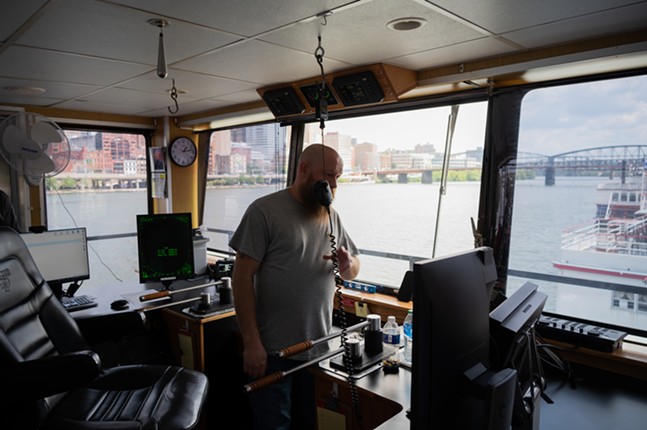
Not far into our conversation, Bucci informs me that a D.C.-based waterways infrastructure lobbying group is about to host a rare publicity tour in Pittsburgh, and she suggests I come along to grasp the sense of scale.
“Sign me up,” I say.
Greeting us at the Station Square terminal Aug. 9 is a familiar sight: a large white towboat with a sign denoting “Darrell. L” pinned to a guard rail around the top deck. Darrell is a known entity among the CP crowd and, being among the larger and stronger vessels, is a frequent handler of long bois. She belongs to the Campbell Transportation Company, Inc. — the region’s largest towboat operator that now has a footprint across the country’s major waterways. I learn from one of the staff that she’s named after the wife of a board member; most, it turns out, are similarly named for family and associates.
Darrell carries us six miles upriver to the Emsworth Locks and Dam, which we pass through for demonstrative purposes before executing a U-turn and heading back upriver to Station Square.
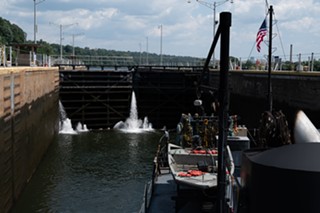
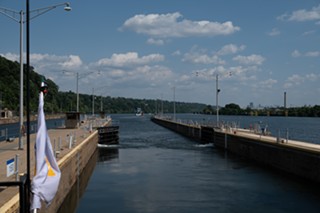
While aboard, we’re permitted to wander her decks and mingle with crewmembers, who seem to be enjoying the comparatively hands-off nature of our freight-less voyage. I and a small pool of reporters join Senior Deckhand Birdie Queen and Port Captain David Boyd in a kitchen area beneath the cabin. It's a long, tight space lined with brown thermofoil cabinets. It’s clean and orderly with nothing except a box of Dunkin’ Donuts and a few appliances visible atop the L-shaped counter.
An affable man of few words, Queen says he, like many in his hometown of Point Pleasant, West Virginia, got into the barging industry through family ties. Some of Campbell’s crew are third generation mariners.
It’s a solitary life on the river, and while the work is hard, the pace is slow. A return trip to the Gulf of Mexico can take an entire month, during which crewmembers never step foot ashore. Consequently, Queen tells us, those aboard develop a strong kinship.
Boyd, whose maritime career began after a stint in the army, says it takes a certain kind of person to take to the lifestyle. Plenty of new recruits don’t make it past their first year.
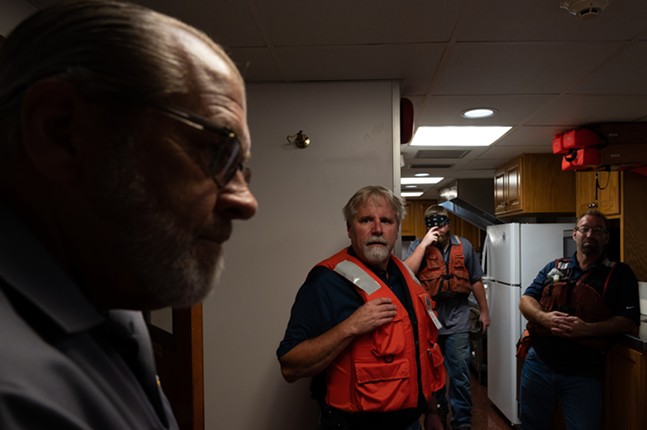
“They say if you wear out your first pair of boots, you’re good to go,” he chuckles.
While he says it’s sometimes hard to be separated from his family, Queen enjoys the work for its quiet dignity and the endless rotation of scenery.
“I love it,” he says. “I’m a happy person.”
The following evening, a dinner at the Duquesne Club with company executives and beltway lobbyists contrasts comically with our conversation in the humble towboat galley.
It’s my first visit to Ye Olde Steele City Club, in the words of former Pittsburgh Post-Gazette cartoonist Tim Menees who devoted much ink to parodying its wealthy members. The setting is admittedly impressive in the fashion of Pittsburgh’s many Gilded Age mementos, but in the same way, it’s predictably trite and stuffy. I can tell the wine is expensive because it has that musty, leathery taste that presumably requires a refined pallet to properly appreciate. The food — I opted for filet mignon over veal — is pleasant but unremarkable.
Moderated chiefly by Campbell CEO Peter Stephaich, a club member and Mellon family associate, the conversation touches on the future of coal, the flawed congressional appropriations process, the challenges of overseeing infrastructure projects that outlast multiple presidential administrations, and Pittsburgh’s unheeded dependence on the river transportation industry.
It’s endearing but also a touch bemusing to witness impassioned waterway experts in conversation. Discussion of the Olmsted Dam and Lock renovation — begun in 1988 and completed 34 years later at a $3 billion price tag — prompts scowls around the room. Speakers show their chops with incisive talk on the cost of soybean tonnage, the Chinese export economy, and the whims of U.S. lawmakers seated on strategic committees. Reporters from trade publications show through their questions that they can keep up with the jargon. I’m content to stay quiet except for the occasional graceless inquiry, such as “So who’s to blame?”
It’s all civil, but there’s a sense of repressed frustration hovering above the table. “Everybody rushes in when a highway collapses, but imagine that happening for river infrastructure,” someone proffers.
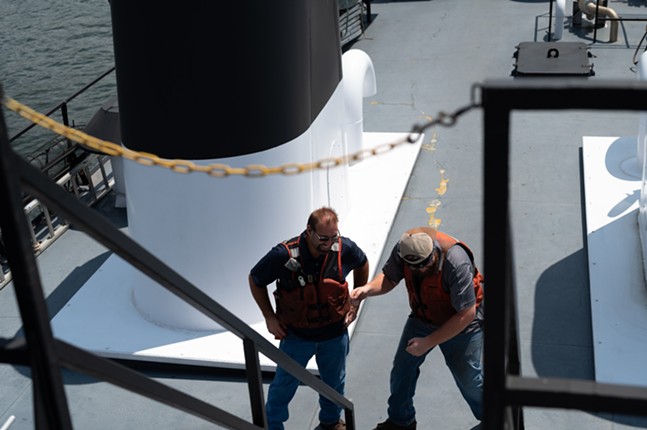
An executive with the American Consolidated National Resources goes back and forth with Stephaich on the viability of coal and the scope for diversifying. Currently, coal shipments account for more than two-thirds of all freight handled within the Port of Pittsburgh, but across the country, grains, metals, cement, and other commodities make up a larger share. Stephaich, having a sizable fleet with stations as far south as Houston, is less dependent on coal than ACNR — an Ohio-based coal company with a towboat division. Michael Somales, the company’s rep among our party, says he’s working on the assumption demand for the smokey fossil fuel will keep them going only as far as 2040. After then, who knows?
Bucci told me during our call that the industry and its affiliates are working hard to encourage diversification away from coal toward palletized freight, containerized freight, and, of course, grain.
“We actually do feed the world on the inland water system and we’re certainly looking to find ways to do that in our region too,” she said. “Pennsylvania has a pretty big agricultural community.”
In the Duquesne Club dining room, though, the feeling seems to be that none of these will ever fully replace those black lumps of carbon that now support the region’s towboat industry.
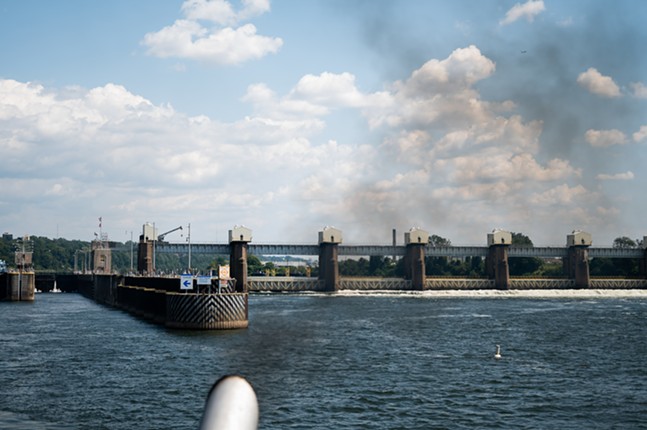
The next day, doubts about the future for Pittsburgh’s towboaters were absent from the confident speeches of officials including, Pennsylvania Lt. Gov. Austin Davis, U.S. Sen. Bob Casey, and a White House representative, who all gathered at the Montgomery Lock and Dam near Monaca for a groundbreaking.
The project in question — an $858 million overhaul and upgrade of the lock and dam system — could take decades to complete. Similar projects are needed at the aging Dashields and Emsworth systems, which opened respectively in 1929 and 1938, but more funds are needed to carry those forward. Completion of the entire Upper Ohio Navigation project is likely to lag well behind the demise of coal, given Somale’s timeline at least.
Whatever might take its place, the tone set by the optimistic statesmen was one of a bright future for Pittsburgh’s long-neglected waterways.
“We can't allow this system to fail,” Casey declared. “Too many lives, too many jobs, too many opportunities depend upon the investment that we're making.”

